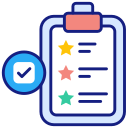The Spectrum of E‑Learning Offerings
Self‑paced offerings let you move through structured videos, readings, and quizzes on your own schedule. They shine when flexibility matters, like for shift workers or busy parents. A reader named Aisha finished a cybersecurity course between night shifts, proving consistency beats perfect timing. What keeps you motivated in self‑paced learning?
The Spectrum of E‑Learning Offerings
Cohort‑based offerings synchronize learners through live workshops, deadlines, and peer accountability. Maya finally completed data analysis after weekly standups nudged her forward. The mix of facilitation, feedback, and community momentum turns intent into action. If structure helps you thrive, consider cohorts—and tell us if group energy boosts your progress.






